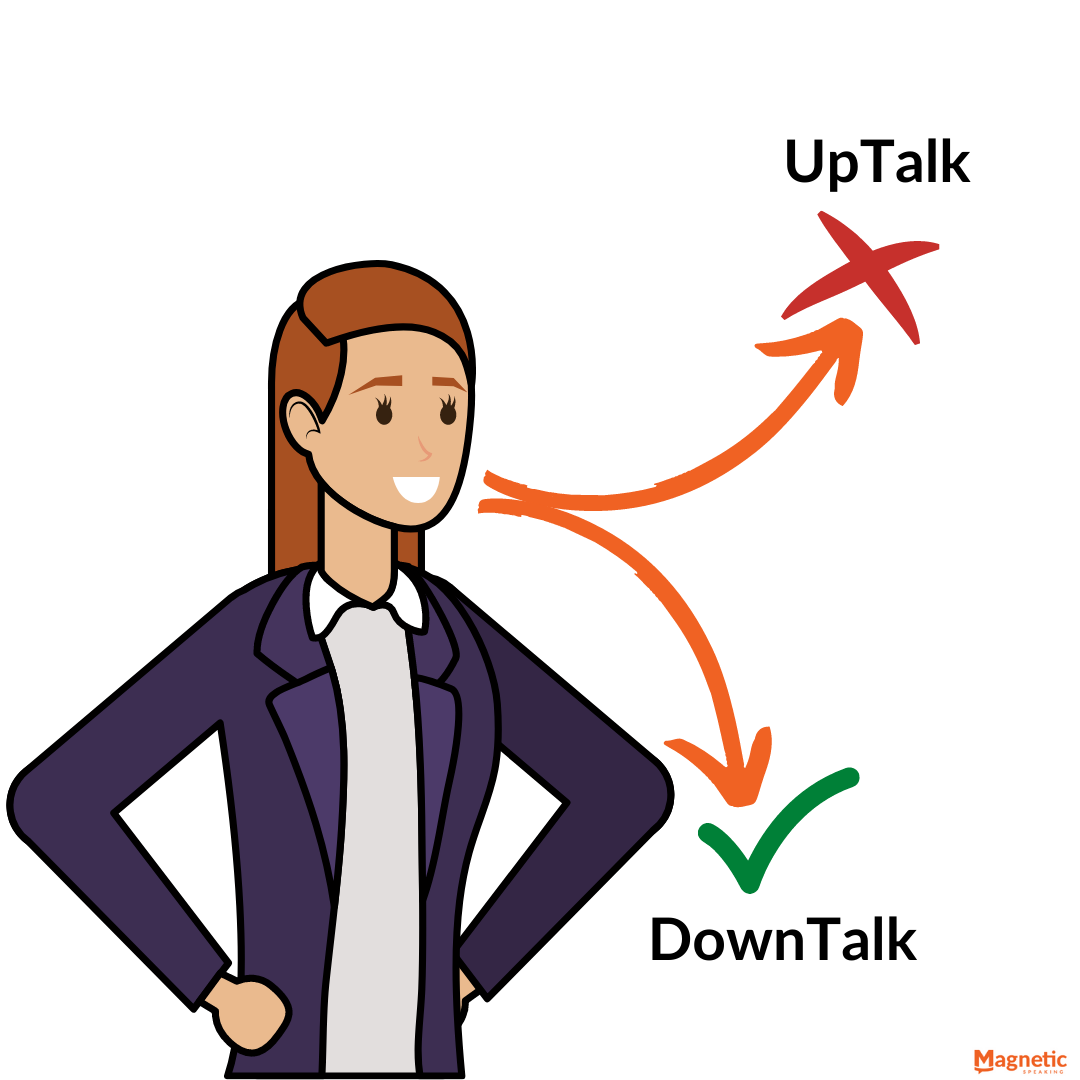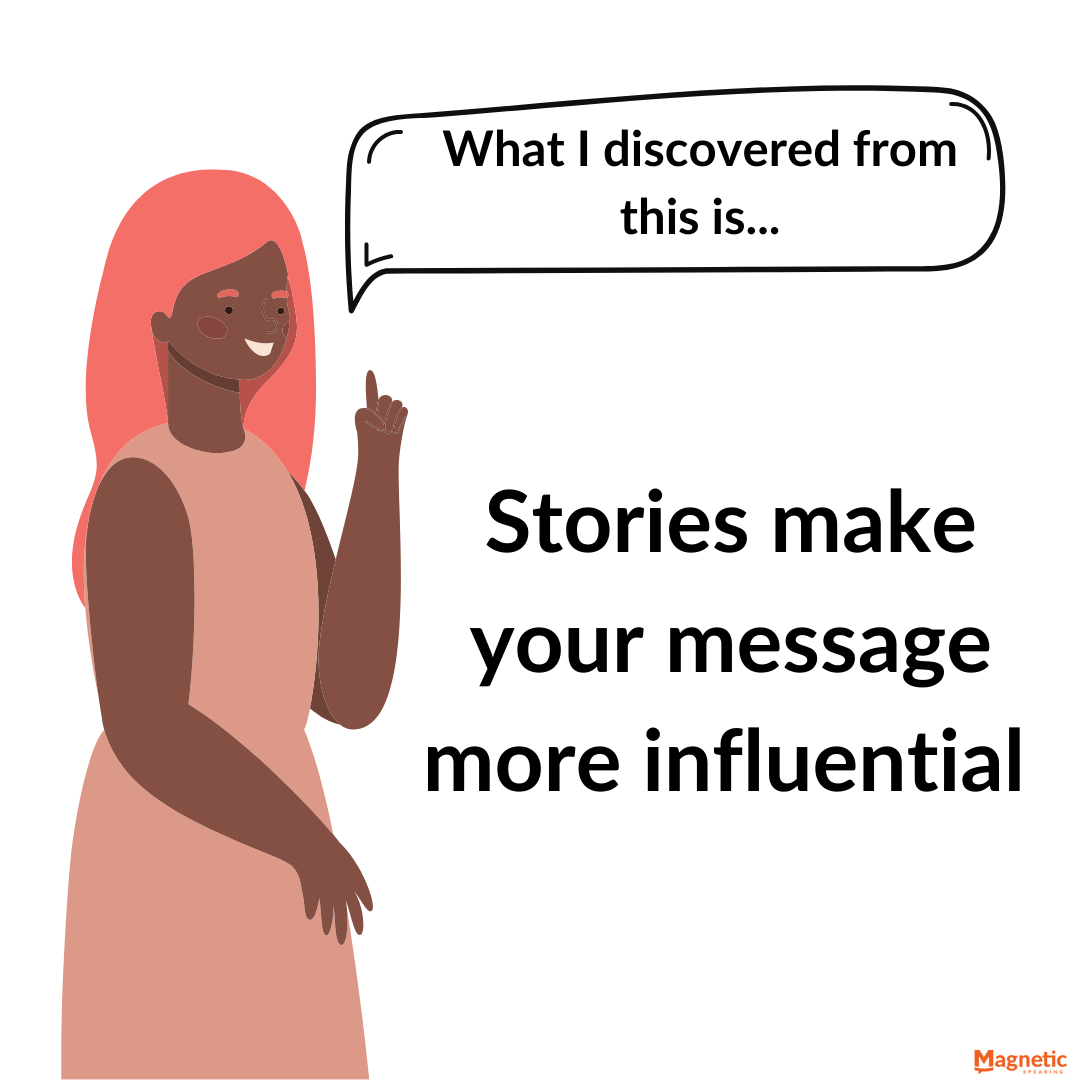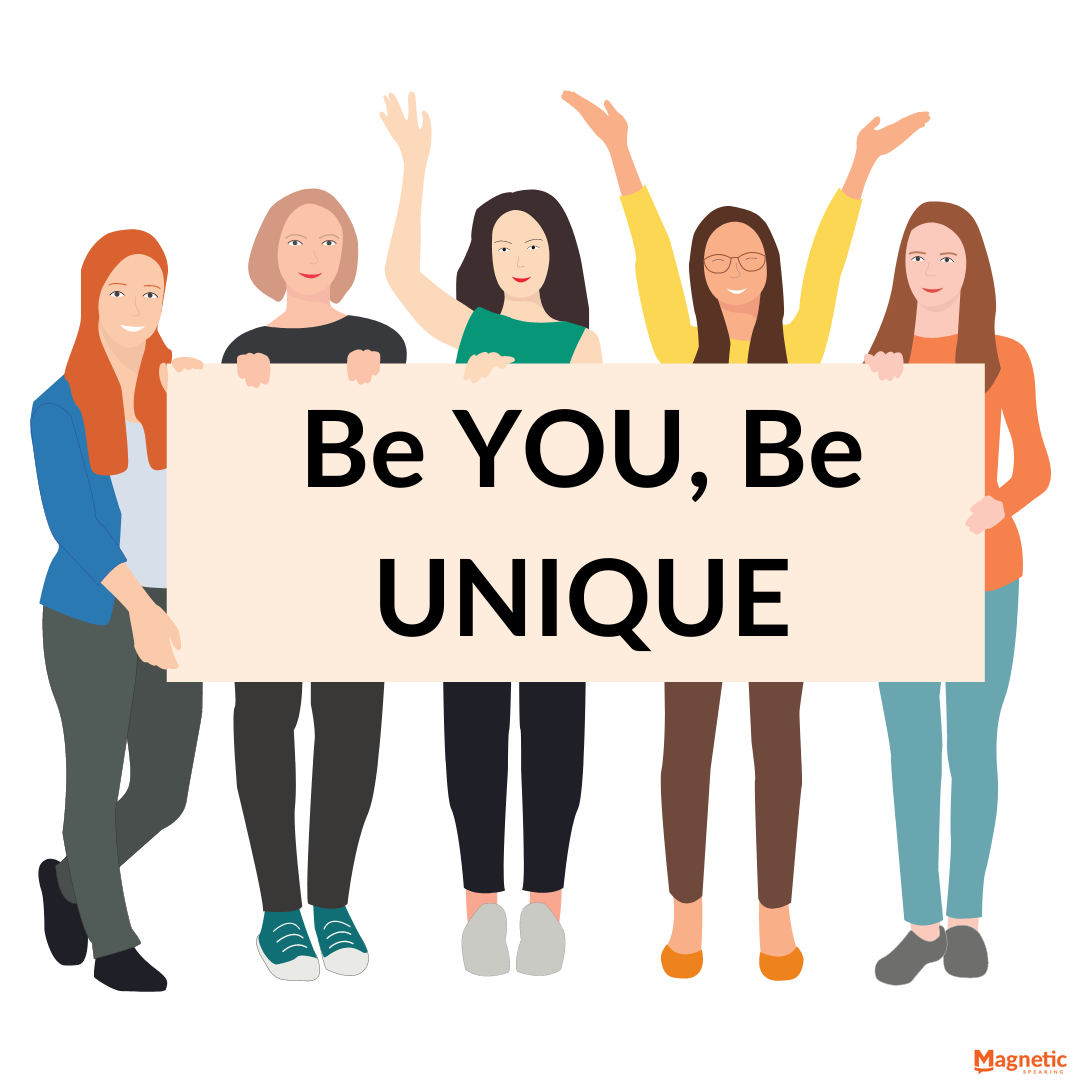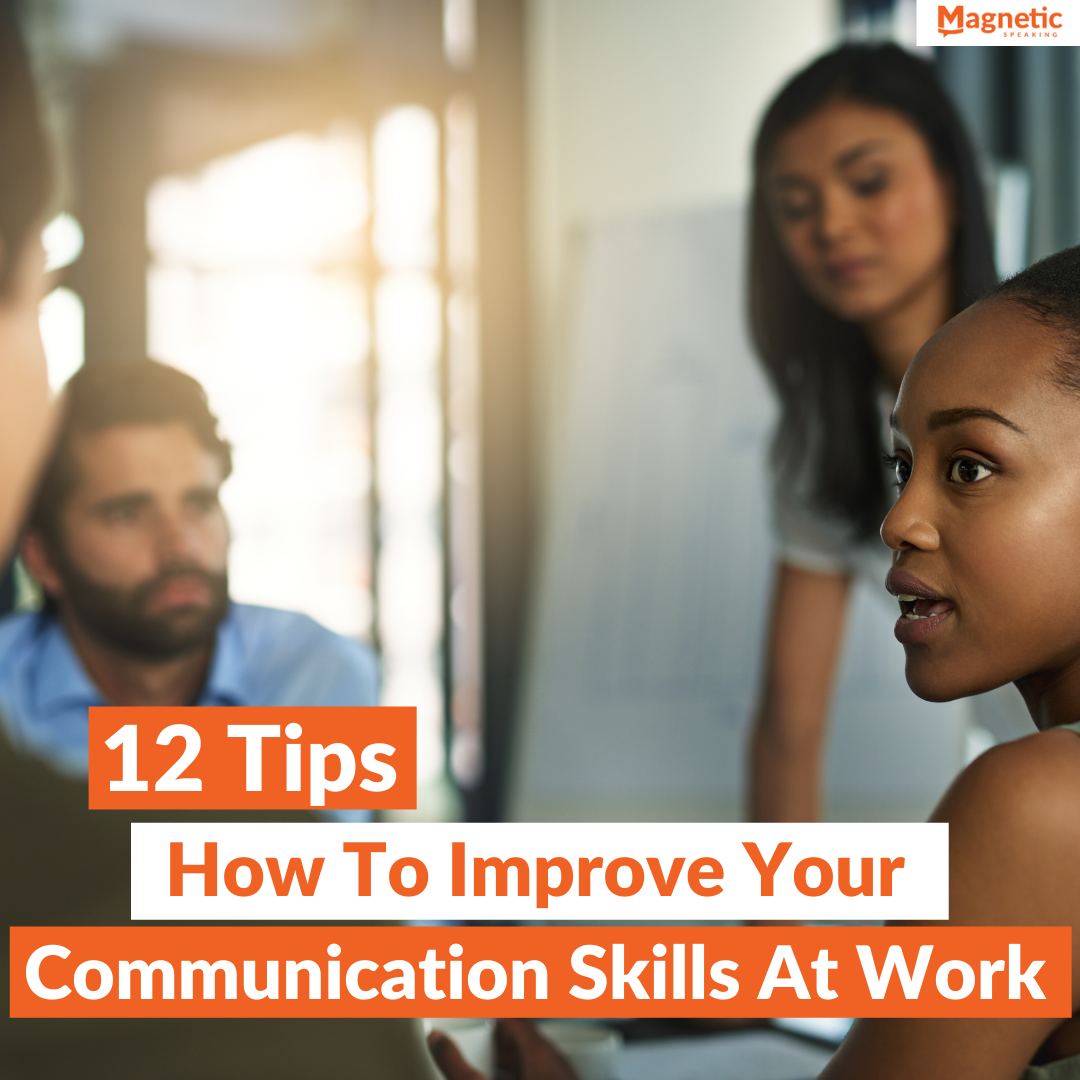Workshop attendee: “Do you have examples of great women public speakers?”
I get this question a lot from women interested in improving their public speaking skills.
The answer is yes and it’s always a great idea to learn from, and then model, the best public speakers.
Below are 6 tips that I synthesized from watching and admiring a lot of effective women presenters. My hope is that if you apply some of these practical and easy to implement tools, they will uplevel your confidence and help you more effectively engage your audience.
6 Public Speaking Tips For Women
Tip #1: Project confidence
Have you ever heard the phrase, “It’s not about what you say, it’s how you say it”?
There’s truth in that saying.
This is important because as women we can often be seen as being too meek and modest or too strong and aggressive in our speaking. The goal should be to strike a balance and that balance comes from authentic, confident self-expression.
According to a doctoral thesis examining the subject from the University of Wolverhampton, “a highly confident speaker is viewed as being more accurate, competent, credible, intelligent, knowledgeable, likable, and believable than a less confident, uncertain speaker.”
In my opinion, confidence is the most important key when it comes to public speaking and presenting.
So how do you project confidence?
There are two schools of thought on this one: The first is an external approach with the “fake it until you make it” attitude. The second is the internal approach where you focus within, learn to silence the inner critic, and exude confidence naturally.
I believe that both approaches have value. When working with women, at Magnetic Speaking’s ‘Women in Leadership’ Bootcamp, we utilize both techniques.
Resources:
Your body language can increase or decrease confidence TedTalk by Amy Cuddy. I like Amy’s approach of “fake it till you BECOME it”.
The 4 pillars of public speaking confidence
Tip #2: Practice an assertive tone

The best and fastest way to sound more assertive is to reduce your uptalk. We all uptalk in different situations but some more than others.
There is even a study by Tom Linneman showing that women who answered correctly on Jeopardy used uptalk 48% of the time compared to men who used uptalk just 27% of the time. Again, the tendency by many women is to attempt to appear more modest and humble but when we use uptalk it communicates doubt and uncertainty.
What is uptalk?
Uptalk is when you raise your intonation at the end of a sentence. It’s when you say, “this article is great???” vs “this article is great.” The first sentence adds the question mark signal at the end of your sentence and subconsciously reduces the impact of what you are saying.
That raised intonation and its association with a question are what makes uptalkers sound less assertive.
Uptalk can be reduced with awareness and practice. Simply catching yourself when you uptalk will reduce it. Also, practicing reading and talking in a declarative tone will train your vocal muscles to do it consistently.
The important thing to remember is that being more assertive does not mean sounding angry or aggressive or arrogant. It communicates certainty.
Tip #3: Engage your audience
Have you ever been in a presentation where you were talked “at” the whole time?
It must’ve been exhausting….and boring!
When speaking to an audience, avoid coming across as a one-way flow of information. Instead, engage your audience by pausing, asking simple, relevant questions, and referring to things someone else has said or done.
This is just a fraction of the engagement techniques you could utilize to make your presentations more engaging to the audience – we teach many more in our Delivery Bootcamp.
To be more engaging, you have to learn and practice engagement techniques so that they come out naturally. The trick is not to bombard your audience with techniques. But to be thoughtful about finding opportunities to engage with them throughout your presentation.
Resources:
The 2-Step Formula For Starting An Engaging Presentation
The Delivery Bootcamp: Learn 9 engagement techniques that are proven to keep your audience hooked.
Tip #4: Include stories in your speaking

If you are interested in influencing people at a deeper level, then use stories.
Paul Zak, a neurochemist specializing in brain chemistry once said that “Stories are powerful because they transport us into other people’s worlds but, in doing that, they change the way our brains work and potentially change our brain chemistry.”
The operative phrase, “change our brain chemistry” provides such deep insight into how powerful stories are. If you are not using stories then you are leaving a lot of power on the table.
Most women I work with think the story they share has to be incredible in some way. Nothing is further from the truth. Thinking like that will prevent you from utilizing stories because you are constantly seeking the “perfect” story.
A simple story is as powerful, if not more powerful, than a complicated story. The story Paul Zak used to test people’s brain chemistry changes is very simple. You can see it towards the end of the video here.
Even though the story was simple, it still altered the audiences’ biochemistry. Which means it worked – and it worked well.
Resources:
Storytelling In Business: The Ultimate Influence Tool
“6 Ways Storytelling Will Make You A Better Presenter”.
Tip #5: Use hard evidence
Humans have two sides to our brains: The right side and the left side of the brain. To win over the right brain you share stories, and to win over the left brain you share facts.
As a speaker, you need to be balanced with your communication approach and you want to make sure you are covering both sides of the brain.
When you share an opinion, make sure you have the right evidence to support it. For example, if you say, “AI is the future of computing” (an opinion) you need to follow up with some concrete evidence to support that opinion versus just saying “because it feels right.”
So what can you use as evidence to support your claims: There are three main categories of evidence you can always rely on.
- Logic: This is the simplest evidence device in existence. Basically, you just reason logically with your audience.
- Data/Science: This is where you back up your claims with studies or research.
- History: You use historical precedence to justify your claims.
If you want to test your ability to furnish compelling evidence, then come up with examples under each category for the statement, “AI is the future of computing.”
>> Comment below which of the 3 categories of evidence you like the most and why!
Tip #6: Be YOU, Be UNIQUE
Billions of advertising dollars are spent each year to teach us who we are as women. There may be nothing wrong with that from the perspective that the ‘goods and services economy has to work somehow’, however, we don’t “need” anyone or anything to tell us who we are – no one does!
What’s important here is to stay in touch with your personal style and authenticity when you are speaking and presenting. Sure, Michelle Obama may do it this way, Oprah may do it that way, but concentrate mostly on how YOU do it – and drown out all the advertising noise telling you “femininity” means anything other than what you make it mean.
Sure, as I said earlier, it’s good to learn from others and get ideas from the masses, however, what will have you stand out as a powerful woman and leader when presenting, is the uniqueness only you bring to the table.
The uniqueness of ideas and uniqueness of expression are your biggest assets. When I was getting trained to lead the Women in Leadership Training at Magnetic Speaking, I was so nervous because I thought I had to teach the material exactly like the other trainers.
On the night before my first training, I decided that I can’t be Julia, I can’t be Peter, I can’t be Rahul, all I can be is me. And, I added some of my own unique style and curriculum in a way that only I can deliver. It was an amazing revelation and most of my jitters went away.
The next day, I nailed the training and the women who attended the Bootcamp stayed around afterward asking me questions and wanting tips. It felt good because they were all very much different than me and we connected by “me” being “me”.
So, yes you still have to look professional, and you still have to use speaking techniques to become more effective, but on top of all of that, you still have to be you 🙂

Women and public speaking is a topic close to my heart. My ability to communicate has helped me tremendously in my career and in my personal life.
I always say communication is really the only thing that connects each of us and our ideas to other human beings. I mean, think about it, we literally create everything first through our thoughts and then our words. The level at which we are able to use our words, no doubt, has a significant impact!
Leave a comment below on which of these tips stuck out to you most, I’d love to hear what you think!




